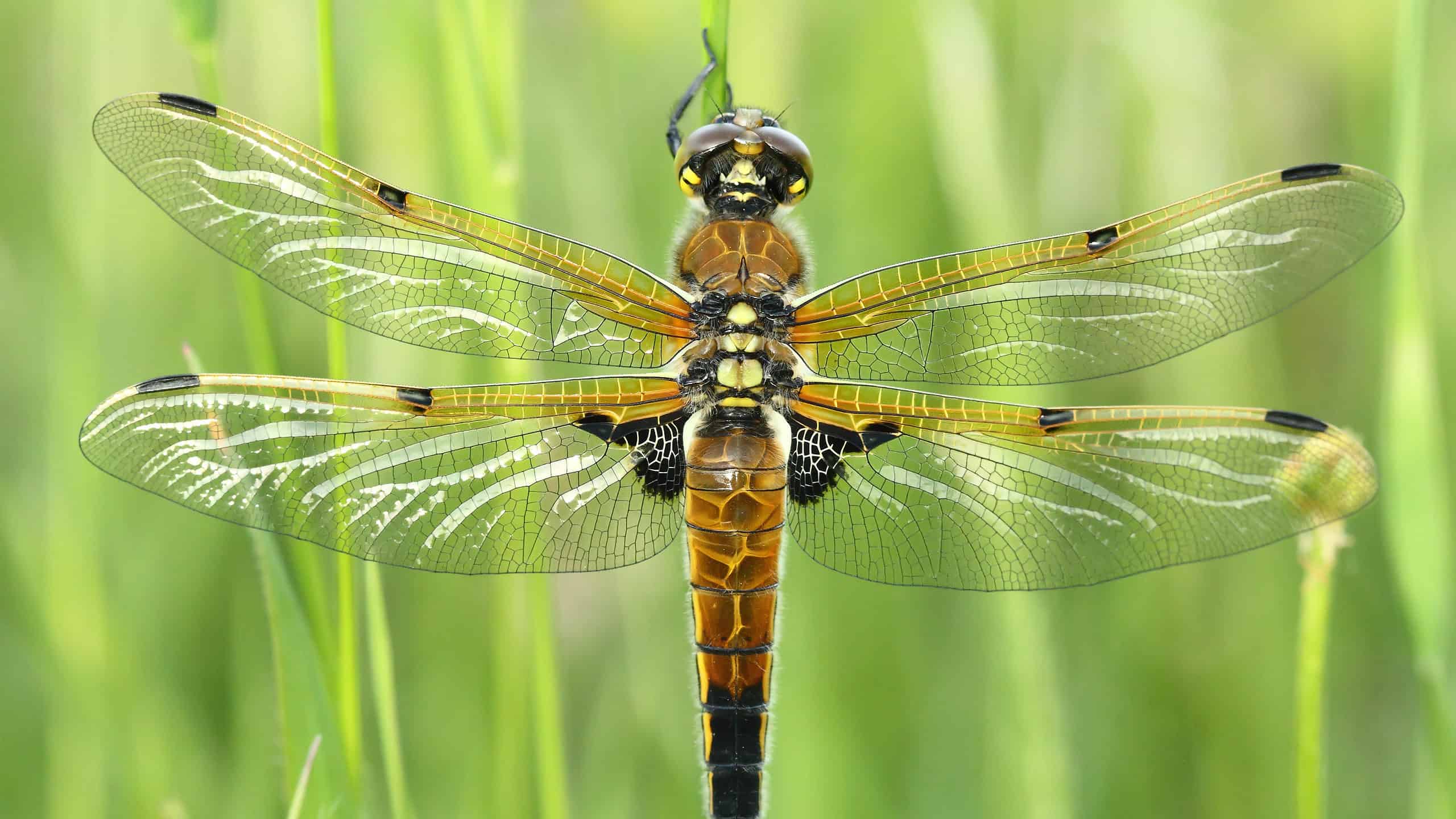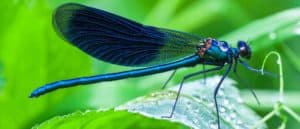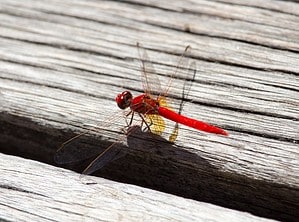Dragonflies are not your average insect. They are attractive and colorful and one of the most popular bugs in the world. You can often find them near water sources like streams, lakes, and ponds. But, not many people know that there are different types of dragonflies. These winged insects first appeared over 3000 million years ago, and while today they usually measure around 2 to 5 inches long, fossils were recovered that suggest they had a wingspan of about 2 feet. They are best identified by their long, narrow bodies and transparent wings. There are currently over 5,000 types of dragonflies, with more being discovered. This article will discuss 12 types of dragonflies and how to identify them.
Different Types of Dragonflies
There are eight superfamilies of dragonflies, containing many different types. Some look very similar, making identifying them challenging but not impossible. Here are 12 types of dragonflies and how to tell them apart.
1. Skimmer
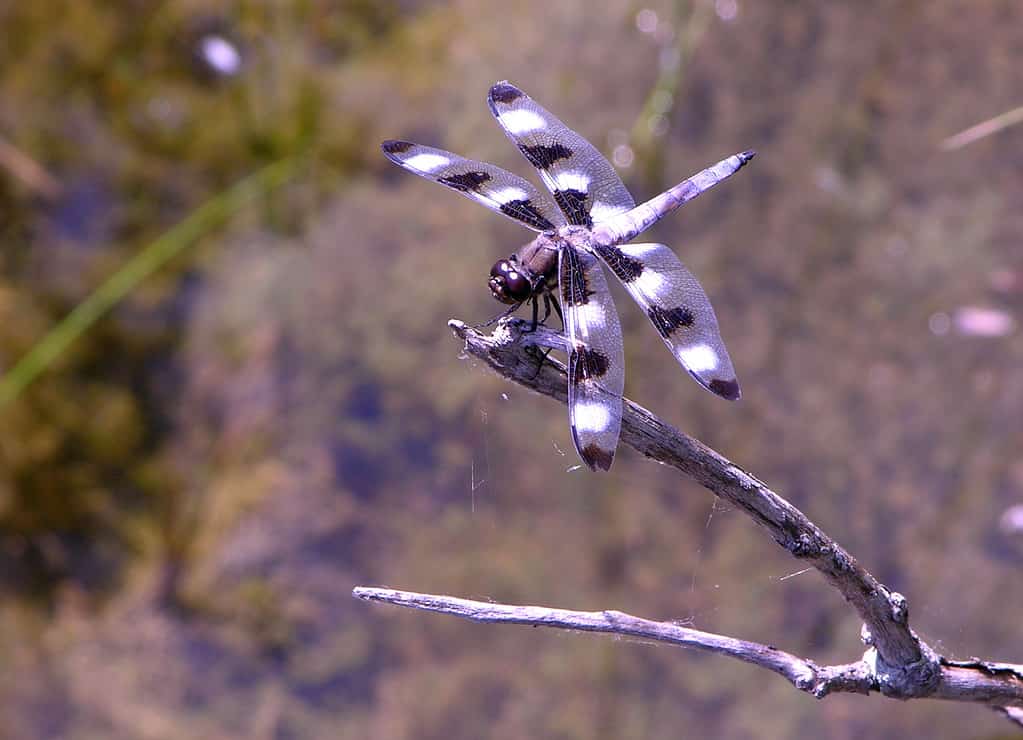
The male twelve-spotted skimmer is one of the 100 species in the Libellulidae family.
©EIBrubaker/iStock via Getty Images
Skimmers are common in many areas of North America. They belong to the family Libellulidae, which consists of over 100 different species of skimmers. Another name for these dragonflies is Perchers, due to their habit of perching on vegetation or crops in the sunlight. They are generally medium in size and can be black or dark brown, with greens, yellows, or blues.
2. Clubtail
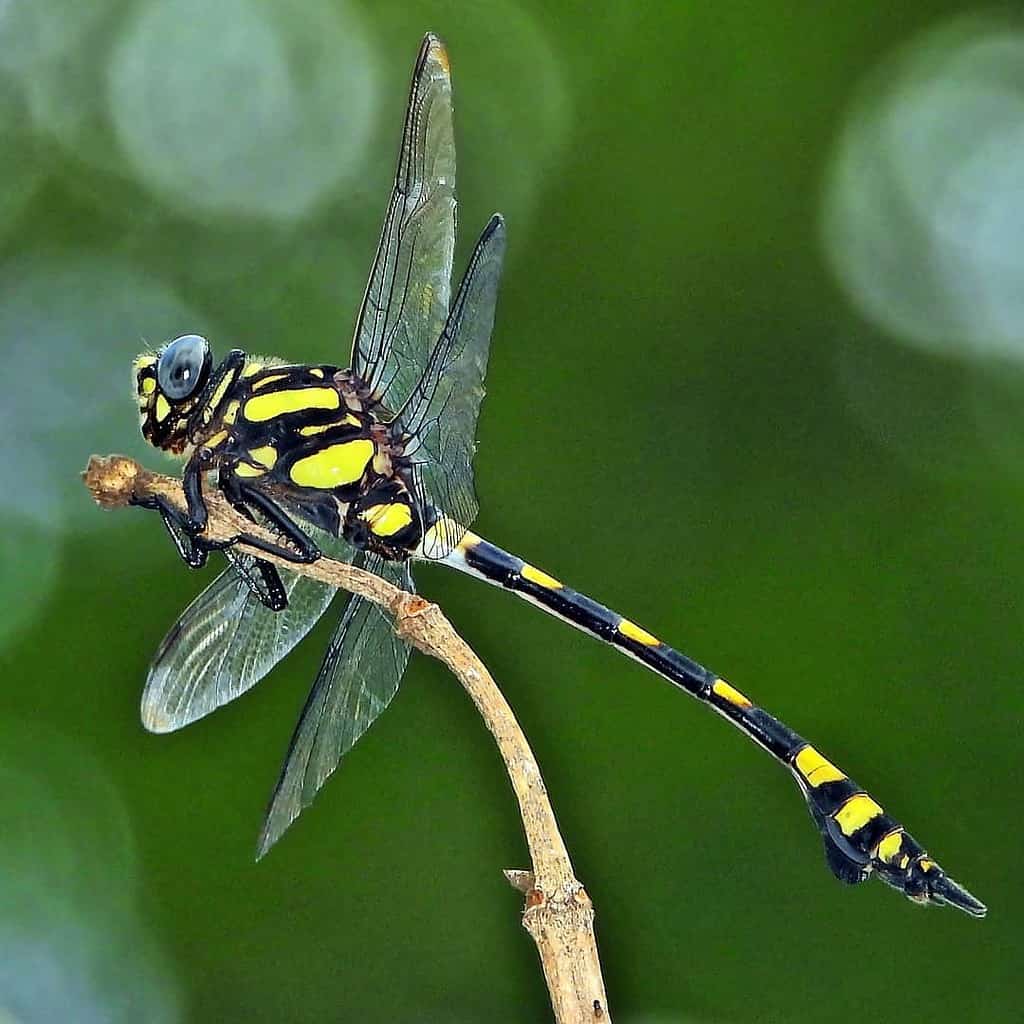
Most clubtails have a club-shaped abdomen, hence the name. However, the males have a more pronounced abdomen.
Clubtails are often seen near or hovering over water sources throughout Europe, Asia, Australia, North America, and South America. They belong to the Gomphidae family, consisting of approximately 900 species. Most clubtails have a club-shaped abdomen, hence the name. However, the males have a more pronounced abdomen. Furthermore, people often refer to them as the blade-tail dragonfly. Males are generally black with yellow spots and green markings close to the abdomen, while females are black with yellow markings.
3. Spiketail
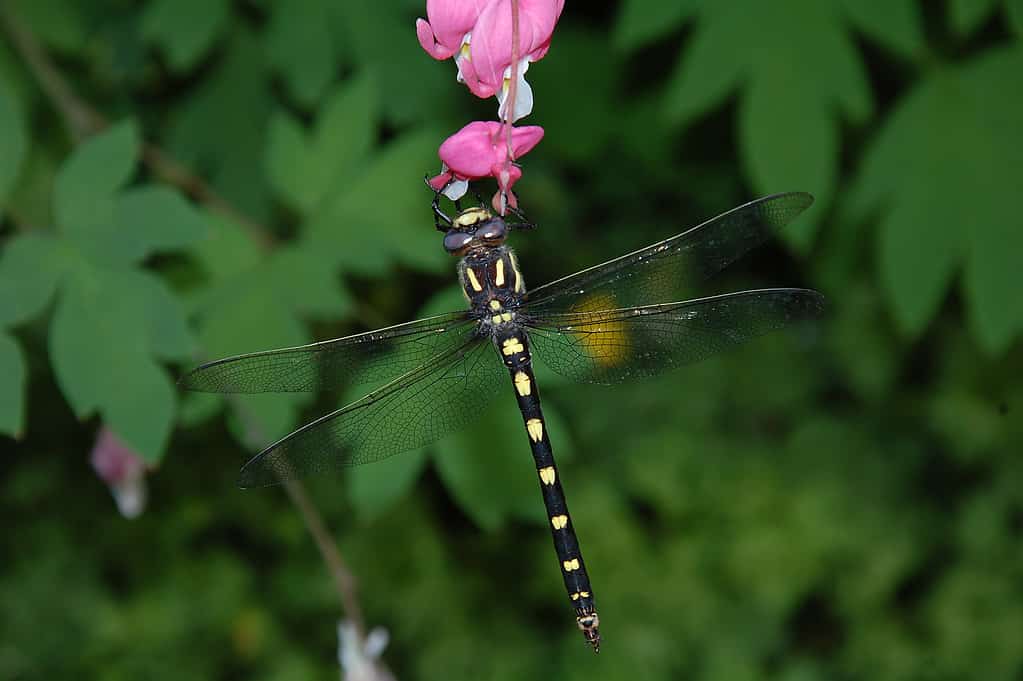
People rarely observe spiketails resting or perching as they are one of the most active types of dragonflies.
These dragonflies belong to the family Cordulegastride and are distinguished by their large, long bodies. Furthermore, they have black or brown abdomens that are usually covered in a distinct bright yellow pattern. People rarely observe spiketails resting or perching as they are one of the most active types of dragonflies. Sightings are common in the wooded areas near the Rocky Mountains.
4. River Cruiser
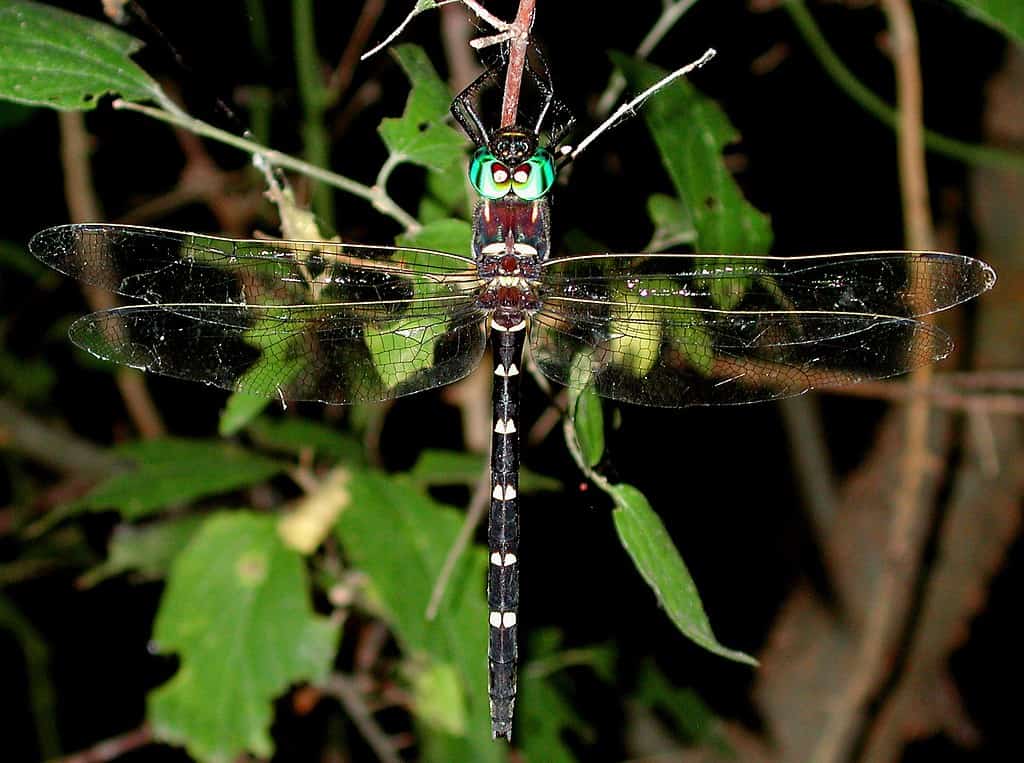
These dragonflies have long, narrow bodies with bright green eyes and yellow stripes.
River cruisers belong to the Macromiidae family and are capable of traveling long distances along streams, river banks, and roads. These dragonflies have long, narrow bodies with bright green eyes and yellow stripes. They are one of the larger types of dragonflies in North America.
5. American Emerald

They belong to the Corduliidae family and are often spotted in forested areas and over lakes.
American emeralds are named after their magnificent emerald-colored eyes. These dragonflies occur throughout North America. They belong to the Corduliidae family and are often spotted in forested areas and over lakes. Furthermore, they have black bodies and yellow rings separating their segments.
6. Hawkers

Females are brown with green markings, while males are usually dark blue with green markings.
©Denis Vesely/Shutterstock.com
Hawkers belong to the Aeshnidae family, and people consider them one of the fastest dragonflies in the world. They occur throughout North America and are known for mating during mid-flight before laying eggs in the water nearby. Females are brown with green markings, while males are usually dark blue with green markings. Furthermore, scientists think that females can fake their own death to avoid advances from unsuitable mates.
7. Tigertail
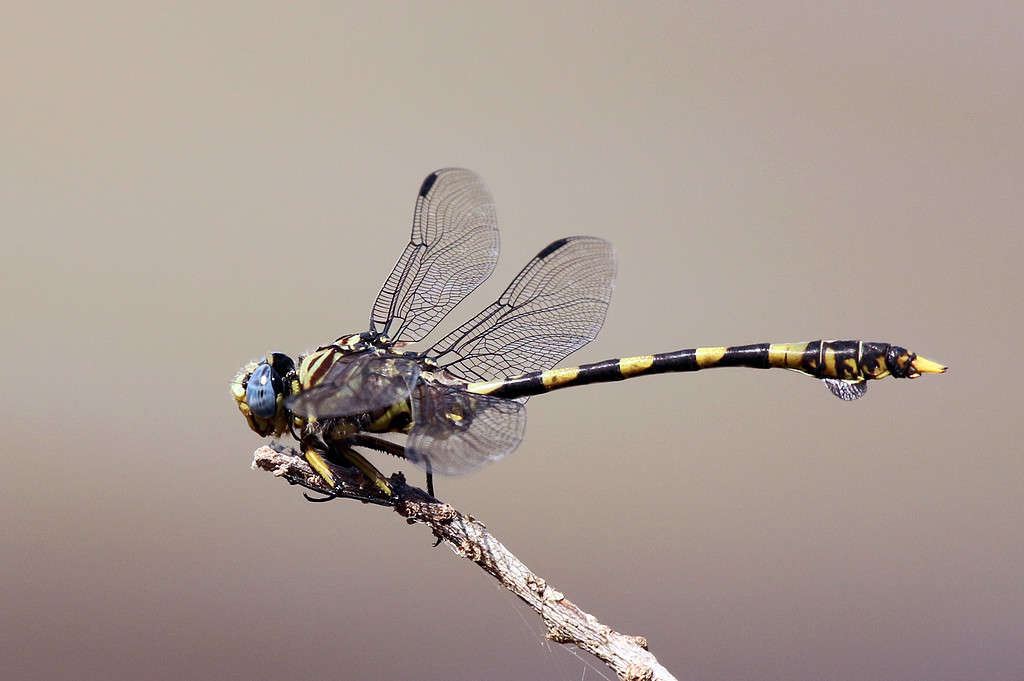
These dragonflies occur in New Guinea and Australia and prefer being near slow-moving bodies of water, like ponds or streams.
One of the different types of dragonflies is the tiger tail which belongs to the Sythemistidae family. They are similar in size to the Corduliidae and Gomphidae dragonflies, with slender abdomens. These dragonflies occur in New Guinea and Australia and prefer being near slow-moving bodies of water, like ponds or streams. Tigertails have black and yellow striped markings on their tails, hence the name.
8. Petaltail
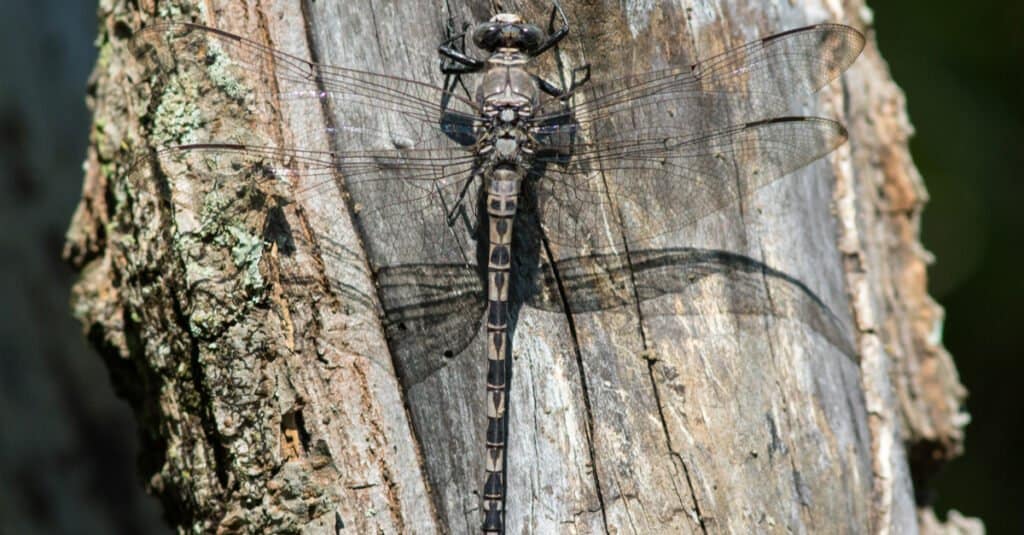
Petaltails belong to the family Petaluridae, which consists of 11 species spread throughout Japan, North America, Australia, Chile, and New Zealand.
©Frode Jacobsen/Shutterstock.com
The petaltail is one of the most distinctive types of dragonflies that derived their names from their long, straight tails, which closely resemble the shape of a petal. They are easily identified by their black and gray coloring. Petaltails belong to the family Petaluridae, which consists of 11 species spread throughout Japan, North America, Australia, Chile, and New Zealand. However, the largest species occurs in Australia. While most species of dragonflies like to lay their eggs close to water, Petaltails prefer areas filled with ferns.
9. Saddlebag
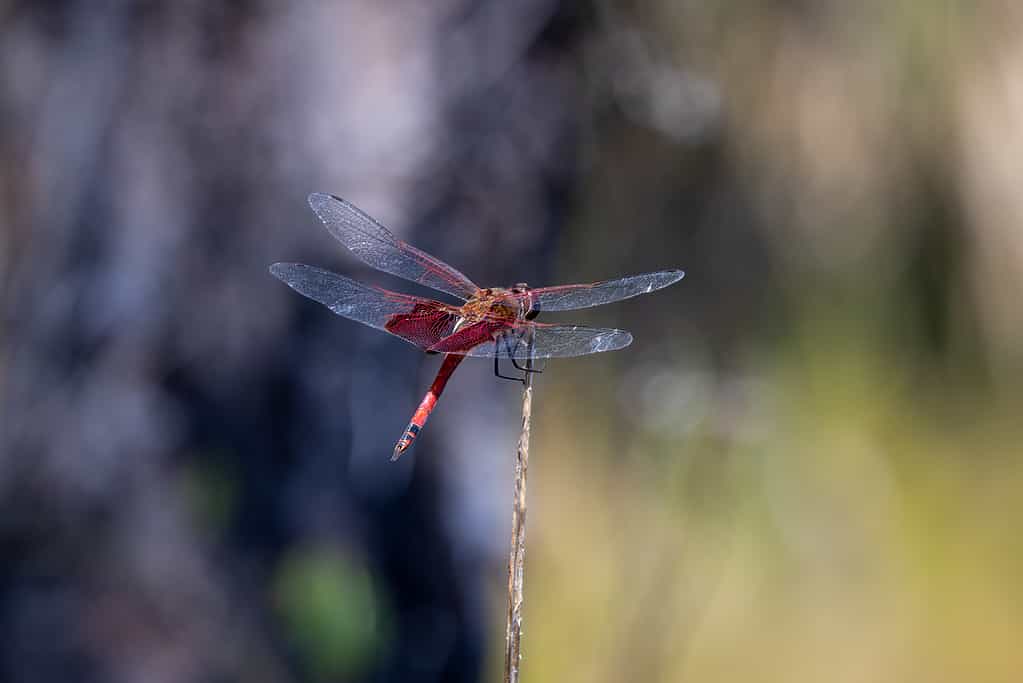
Saddlebag dragonflies can travel from the north in the spring to the Atlantic coast in the autumn.
©DrWD40/iStock via Getty Images
Saddlebags occur throughout Canada, the United States, and Mexico. They belong to the family Libellulidae. People sometimes refer to these dragonflies as black saddlebags because of their dark coloring, as they can vary from dark brown, deep red, or almost pitch black, depending on the species. Furthermore, they prefer slow-moving bodies of water without fish and environments with dense vegetation. Saddlebag dragonflies can travel from the north in the spring to the Atlantic coast in the autumn. People often call them Dancing Gliders due to their mating dance, which helps them find a suitable mate and lay eggs. These dragonflies are handy to have around because they control mosquito populations.
10. Darner
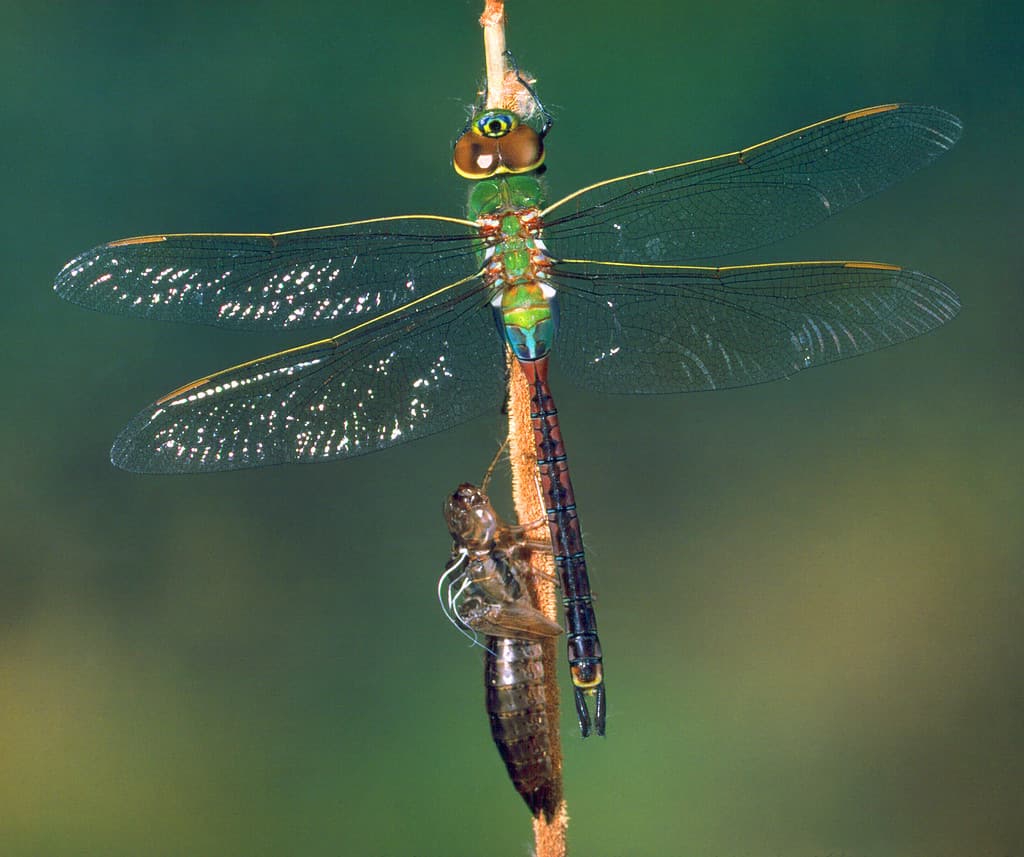
These dragonflies have black bodies with blue spots. However, while males have blue dots on their abdomen and thorax, females have green or yellow spots.
©AndrewASkolnick/Shutterstock.com
Darners belong to the Aeshnidae family and are often found near North America’s streams, lakes, and ponds. These dragonflies have black bodies with blue spots. However, while males have blue dots on their abdomen and thorax, females have green or yellow spots.
11. Broadwing Damselfly

Some damselflies, like the River Jewelwing, can be just as large as some species of dragonflies.
The broadwing damselfly is one of the largest species and displays bright, flashy colors, often with hints of metallic green and blue. Some damselflies, like the River Jewelwing, can be just as large as some species of dragonflies. Because of their size, appearance, and wide wings, they are easily identifiable.
12. Spreadwing Damselfly
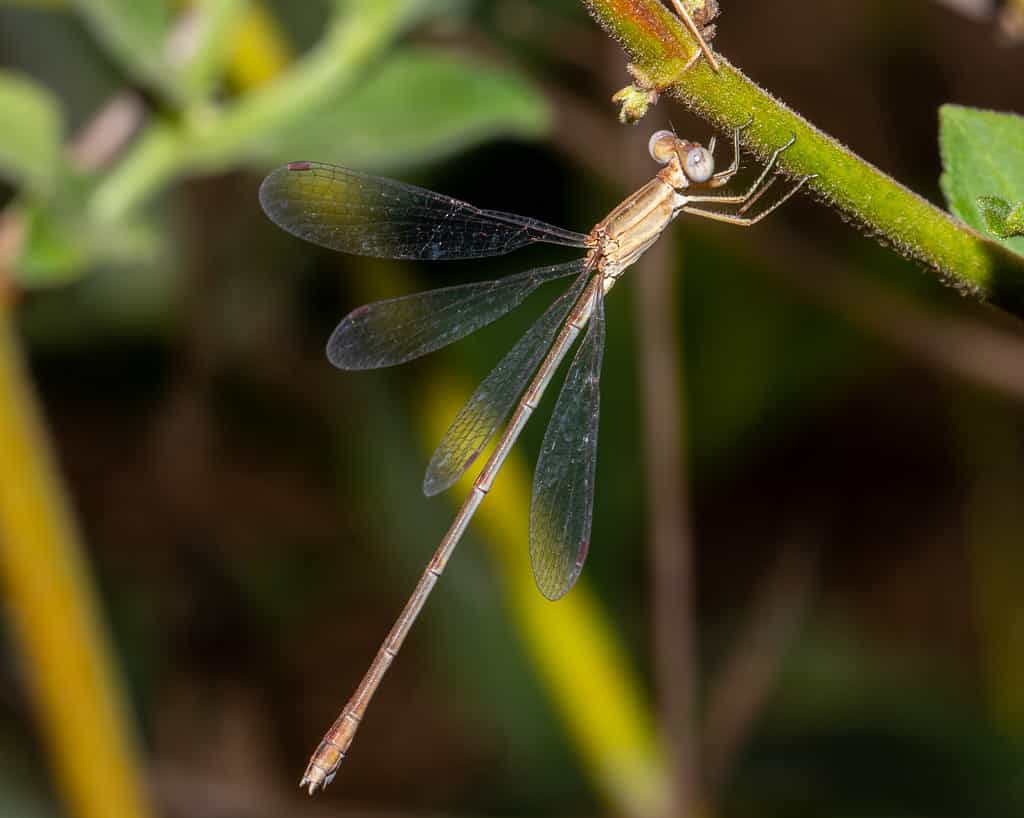
Spreadwing damselflies prefer being near slow-moving water sources, like ponds, streams, and swimming pools. These dragonflies perch on vegetation or crops in the sun while searching for food.
While damselflies are not actually dragonflies, they belong to the same order, Odonata. They get their name from their behavior. They always keep their wings spread evenly, even when resting. Spreadwing damselflies prefer being near slow-moving water sources, like ponds, streams, and swimming pools. These dragonflies perch on vegetation or crops in the sun while searching for food. Large damselflies typically have green or metallic bronze coloring.
Thank you for reading! Have some feedback for us? Contact the AZ Animals editorial team.

